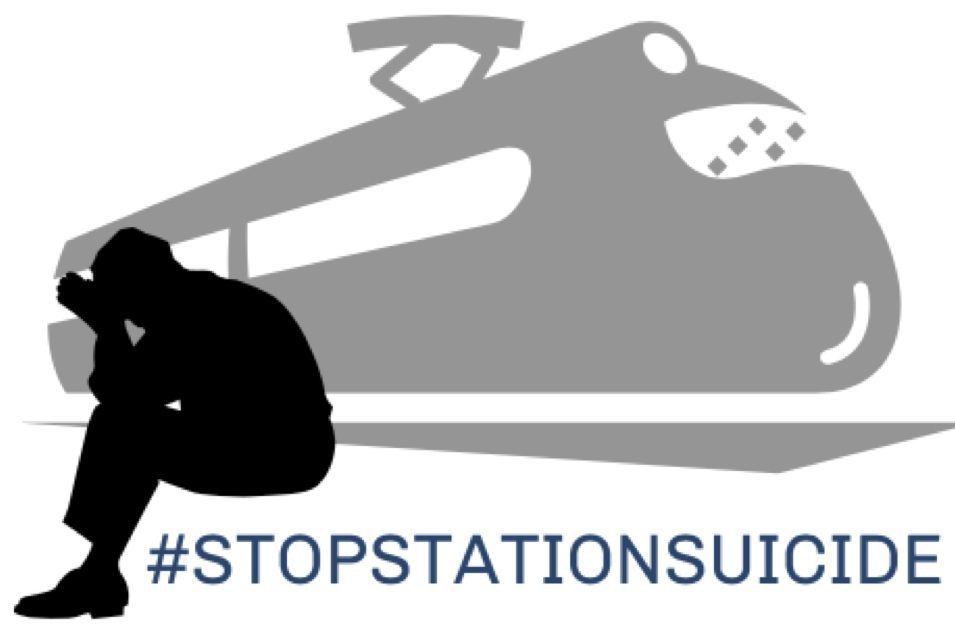It is important to acknowledge that there is currently work in progress to fix the problem at hand, with Network Rail and the Samaritans focusing on internal communication by putting into practise training courses and events to publicise the issue, but there is still a lot more that needs to be done.
In the last 2 years, there has been 47 fewer people taking their lives, which is 18% fewer than in 2015/16, a positive statistic that shows the impact anti-suicide campaigns are having on people. But railway suicide is still a major concern, with the number of station suicides increasing along the line or on platform edges.
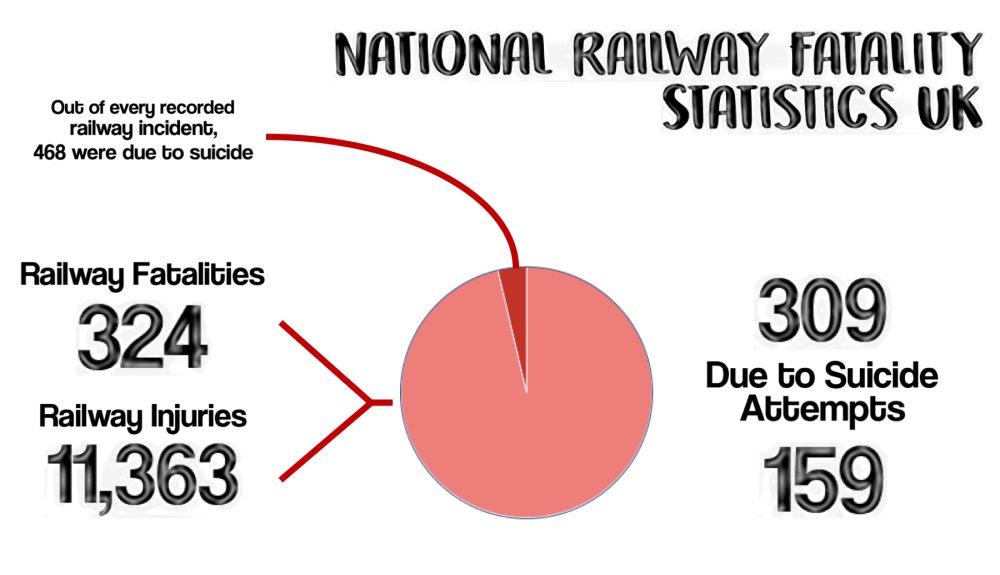
Network Rail owns and operates Britain’s railway. Their main duty is to ensure that the railway is safe and reliable for the four and half million people who use it.
Statistics received from Network Rail have shown:
- 50% are 30-35 year old while males
- typically 60-70% have mental health problems
- Majority get access through the station
- 20% can survive
- In the UK – there is a suicide every 85 minutes
- Men are 3 times more likely to do it than women
- Suicidal thoughts only lasts 30 minutes
Network Rail work as one to reduce station suicide. They offer a suicide prevention training course for their employees and have their own programme. To date, 16,000 employees have received this training.
An anonymous employee of Network Rail who attended the course last week, said: “The course was very productive. We learned how to speak to the ’emotionally thick’ (term used to describe an individual suffering with suicidal thoughts). It was recommended that you should approach the person with an open question, don’t just ask them if they are ok. The questions they recommended were; you look upset, what is wrong?”
Network Rail recently teamed up with Samaritans in order to train staff and offer support. They believe that one way in preventing suicide is by encouraging travellers to trust their instinct and give them the confidence to approach someone who looks vulnerable and may need help. Suicidal thoughts are temporary, so passengers interrupting with a simple question will help stop these thoughts. Small Talk can help save lives.
Research has shown that people wanted to act and help a person but they do not know the best way to approach.
A recent survey carried out by Stop Station Suicide, shows how the public feel towards approaching someone who looks distressed and the action they would take.
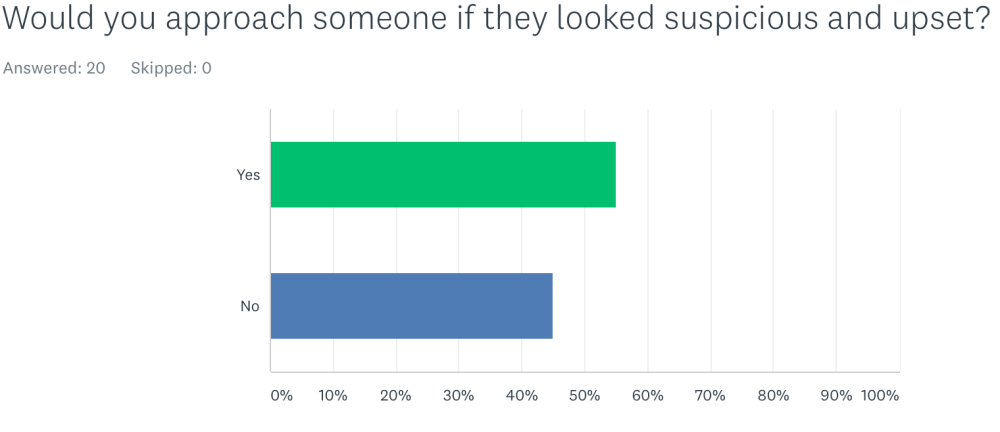
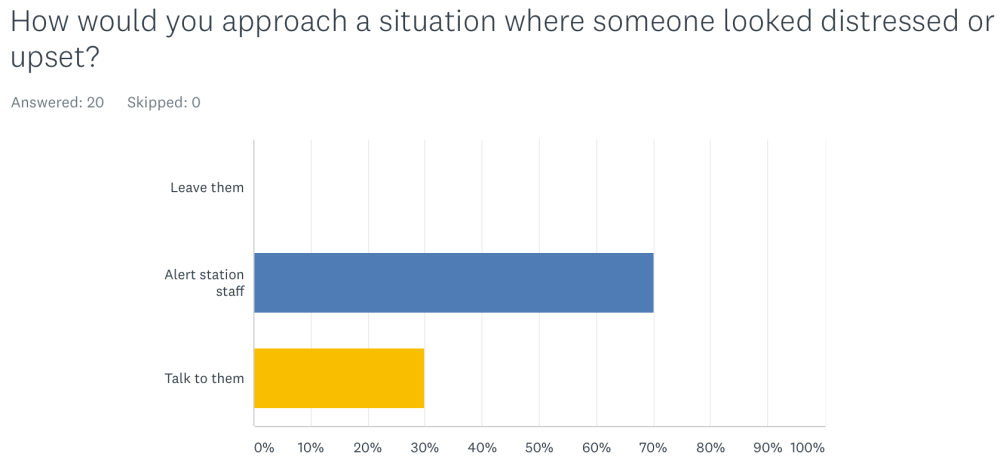
The results show that although the public would be willing to engage someone, they are not as confident to engage them personally and rather alert someone else to the situation.
The anonymous employee of Network Rail gave an insight into how she believe suicide could be prevented in the future. She said: “We are working towards preventing. It’s not all about the stations, it could be the busiest station in the world and suicide would still happen. People are being trained everyday to help, there are more notices being put up, so they are in your face. I do agree that more physical changes could be implemented, such as barriers, but it is costly.”
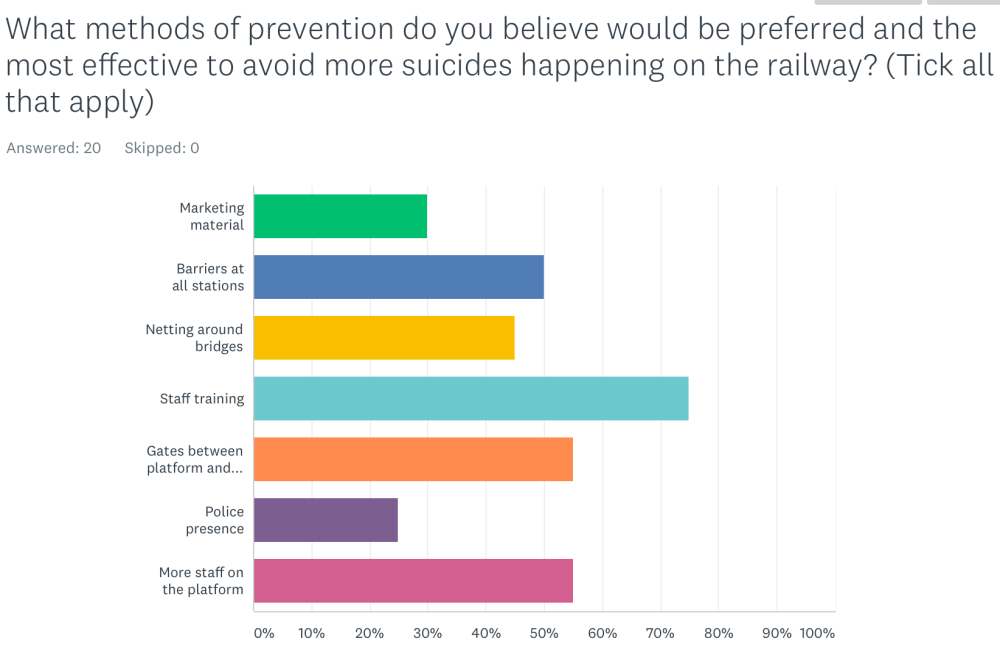
Currently, there are many different strategies that can be put in place in order to prevent station suicide. Network Rail is looking to create a smartphone application that allows passengers to alert the station straight away if there is a suspicious person on the platform or line, which could allow trains to slow down in time or staff members to attend the situation before the suicide is committed.
Other strategies are already popular around Europe, but could be costly. However, they are certainly more effective in the long-run. Preventing accessibility through gating and 100% rubber barriers means that people can’t gain access to the line but for the platform itself, which makes it easier to intercept the distressed individual. Other strategies include smart CCTV cameras and barriers between the platform edge and the line, but these could be more costly despite their efficiency and the importance of the issue.
So, the plea is simple, the strategies are there, but the problem, is not as much of a priority as it should be and therefore time and money isn’t being spent on preventing innocent lives from being taken.
More still needs to be done. Lets #StopStationSuicide
